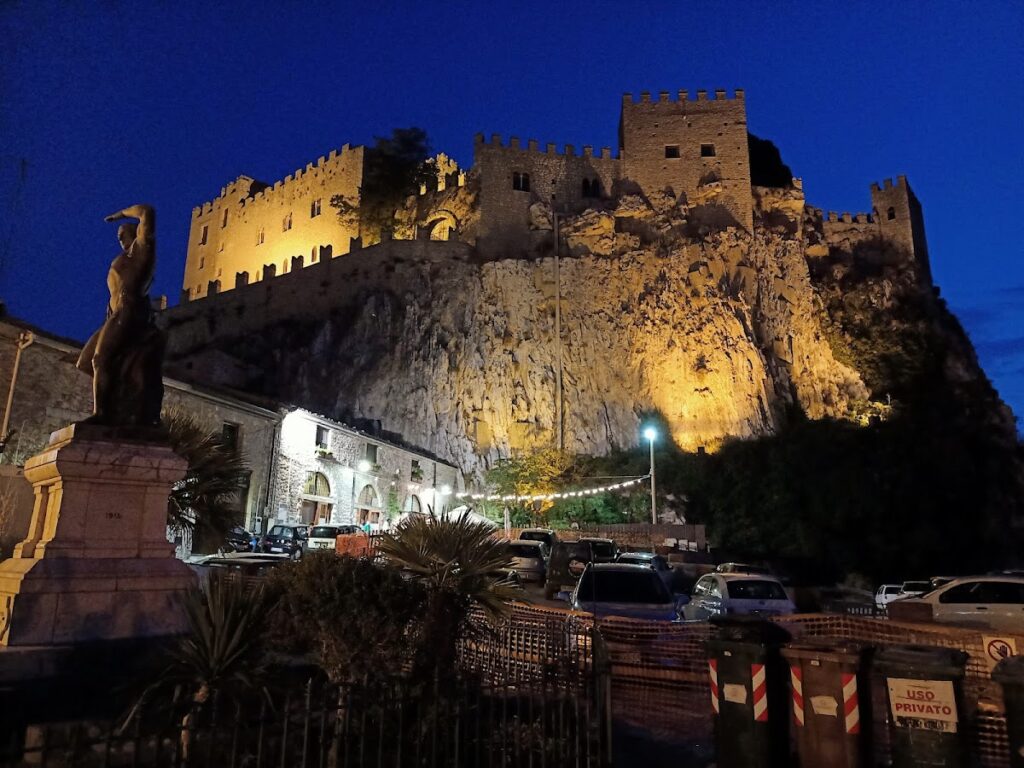Castello di Caccamo: A Norman Fortress and Noble Residence in Italy
Visitor Information
Google Rating: 4.5
Popularity: Medium
Google Maps: View on Google Maps
Official Website: www.facebook.com
Country: Italy
Civilization: Unclassified
Remains: Military
History
The Castello di Caccamo is located in the town of Caccamo, Italy. This fortress was originally constructed by the Normans in the 12th century, under the direction of Matteo Bonnellus, following the Norman reconquest of Sicily. It was most likely built on the site of an earlier Arab fortification, taking advantage of the strategic vantage point atop a rocky promontory.
In the middle of the 12th century, the castle gained historical importance as the setting for a significant political event. In 1160, the Sala della Congiura, or Conspiracy Hall, witnessed a failed uprising by Norman barons who opposed King William I of Sicily. Later, during the turbulent period of the Sicilian Vespers in the late 13th century, Giovanni di Saint-Rémy, the royal prefect serving King Charles I of Anjou, took refuge within the castle. However, he was ultimately captured and executed by local forces, reflecting the deep unrest associated with that era.
From the 14th century onward, the castle came under the control of the powerful Chiaramonte family, beginning with Manfredi I Chiaramonte. The family undertook significant structural enhancements, shaping the castle’s appearance and function over the following centuries. Additional minor modifications to the fortress continued into the 17th century.
In 1480, ownership passed to Fadrique Enríquez, the Admiral of Castile, following a marriage alliance. This transition marked the beginning of the castle’s gradual decline as a military stronghold. The Amato family acquired the barony in 1646 and were later elevated to ducal status by King Philip III of Sicily. During their tenure, the castle underwent extensive renovations that shifted its character from a defensive fortress into an elegant noble residence. This transformation included the addition of richly decorated wooden ceilings and frescoed friezes, softening its once-militaristic ambiance.
After 1813, the castle became the property of the De Spucches family, who held the titles Prince of Galati and Duke of Caccamo. They initiated stylistic restorations aimed at preserving the existing structure. However, a devastating earthquake in 1823 caused the destruction of the castle’s main tower, known as the Torre Mastra. This event started a period of decline despite ongoing restoration attempts. The ducal family continued to inhabit the castle until it was purchased by the Sicilian regional authorities in 1963. Beginning in 1974, systematic restoration efforts were carried out, and in 2012, a museum dedicated to ancient weapons was established within the castle’s premises.
Remains
The Castello di Caccamo occupies a commanding position on a steep cliff rising between 513 and 521 meters above sea level, overlooking the surrounding landscapes including the valley of the San Leonardo River and the nearby Rosmarina artificial lake. The castle’s layout adapts to the contours of the rocky spur it crowns, resulting in an irregular floor plan that integrates seamlessly with its natural setting. The fortress is primarily built from white stone, lending it a distinctive appearance.
The defensive features remain prominent, with massive walls topped by swallowtail battlements, characterized by their V-shaped design that was commonly used in medieval fortifications for archers and defenders. Multiple towers punctuate the walls, providing vantage points for surveillance and defense. A moat further enhanced the castle’s protection, encircling the courtyard and limiting access to the interior spaces.
Inside, the castle presents a complex network of rooms and stairways developed over centuries. Although originally intended for military use, the interior reflects its eventual conversion into a noble residence, featuring richly painted wooden ceilings and frescoed friezes seated within various chambers, particularly those remodeled during the Amato family’s 17th-century renovation. One of the castle’s historically significant rooms is the Sala della Congiura. This hall is remembered for its association with the 1160 conspiracy against King William I, marking it as a space of political intrigue.
The main tower, known as the Torre Mastra, stood as a prominent element of the fortress but was severely damaged and destroyed by an earthquake in 1823. Its loss contributed to the structural decline that followed. Despite this, restoration initiatives commenced in the 1970s have sought to stabilize and preserve the remaining elements of the castle. Modern adaptations have introduced museum spaces, including displays dedicated to ancient weapons, while other areas accommodate public functions such as conferences and dining facilities. The castle’s fabric today thus embodies layers of altered use, from medieval fortress to aristocratic residence, to heritage site.










